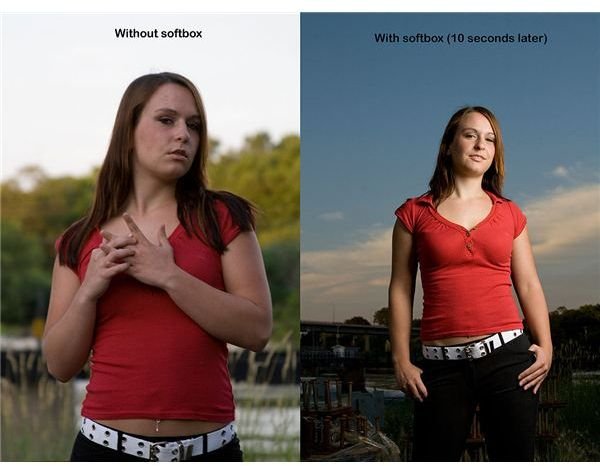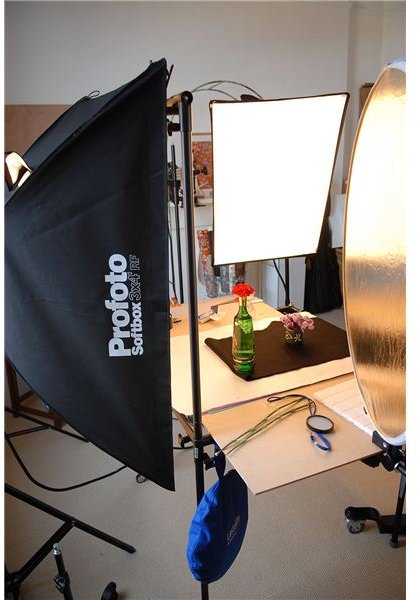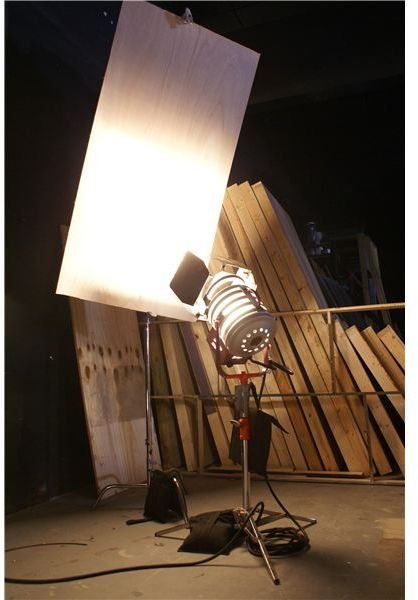The Ultimate Guide to Photography Lighting
Like a lot of concepts in photography, lighting seems complicated but is actually pretty simple once you have a good grasp of the basics. There are lighting setups that can be used in many different situations, and there are variations and techniques to address any light problem you might encounter.
While you may come across situations as diverse as studio lighting where you can control every photon, to outdoor shoots with harsh overhead sunlight, to night scenes with very little available light, once you understand how lighting works, you’ll be able to find a solution. You’ll find information on those basic concepts here, as well as useful tips and instructions for very specific situations.
Follow the advice and diagrams here, but never be afraid to experiment. You never know when tweaking the angle or intensity of a single light might make the difference between a good photograph and a great one. And if you’re shooting digital, the only thing you’ll waste is a bit of time.
The Basics of Lighting for Photography
The essence of photography is the creation of images by capturing light on a photosensitive surface, so choosing the best lighting for your subject is vital. Before you get entangled in specific lighting techniques for particular situations, there are some basic concepts to understand and some simple setups that you can use in many situations.
- Common Lighting Terminology
- Photographic Lighting for Beginners
- The Best Photography Lighting Tricks
- 8 Basic Lighting Tips
- Primary Light Sources in Photography
- How to Bounce Light
- Tips for Using Background Lighting
- Using Directional Light in Photography
- How to Use Backlighting
Studio Lighting

The easiest way to control lighting is to shoot in a studio setting. That way, you can choose and place your lights, diffusers, and reflectors. But you don’t have to know everything about lighting to get good results in the studio if you learn the basics and are willing to experiment a little.
- Simple Lighting Setups for the Studio
- Home-Based Studio Lighting
- Ratio Lighting Made Easy
- How to Use Photography Umbrellas
- Portrait Lighting in the Studio
Lighting With Flash
Most new cameras have built-in flash, but you can also get hot-shoe-mounted flash units and off-camera flashes for SLRs (digital and analog) and some rangefinder cameras. To get the best results with flash lighting, you’ll want to do a little more than just turn the flash on and let the camera do everything else. Like all photography lighting, flash lighting is based on a few simple concepts with variations for particular situations.
- How to Use Flash-as-Fill
- Using a Flash Outdoors
- What is a Flash Diffuser and How Does It Work?
- What is a Ring Flash and What is it Good For?
- 5 Ways to Trigger Off-Camera Flash
Lighting Outside the Studio
Outside the studio, you’ll have less control over the lighting of your subject, but there are portable lighting options as well as techniques to make the best use of available light. To get great images, learn what your options are and how to use them with the ambient light of the scene, to best effect.
- Shooting With Available Light
- Photography With Existing Light
- Lighting for Wedding Photography
- Lighting for Engagement Photography
- Lighting for Landscape Photography
- Lighting for Nature Photography
- Lighting for Location Shoots
- Lighting in Photography of Live Theater
- A Two-Light Setup for Outdoor Portraits
- Lighting for Photographing a Halloween Scene
Lighting for Night Photography
Taking photographs at night introduces its own set of difficulties, as if getting good lighting weren’t already hard enough. But night photography also has interesting qualities that daytime shooting can’t capture, and presents unique opportunities to play with light. You’ll need to learn about aperture and exposure times, too, which become even more vital in the often low-light situations you find at night.
- Techniques for Digital Night Photography
- Using a Flash in Night Photography
- A Beginners’ Guide to Light Graffiti
- Light Balance and Other Tips for Sports Photography at Night
Lighting for Portrait Photography

Many of the general lighting techniques you can learn from the articles above will also apply to shooting people, but portrait photography has its own considerations. There are qualities you’ll want to aim for, and some you’ll want to avoid, when taking portraits. There are also some simple lighting arrangements you can use over and over, adding subtle variations to get just the effect you desire.
- Portrait Photography Lighting Techniques
- Portrait Lighting Made Simple
- Ratio Lighting for Portraits
- Dealing With Shadows in Portraits
- “Old Hollywood” Glamour Lighting for Portraits
Lighting for Product and Object Photography

The photography of products and objects is often done from closer up than other subjects, which can present different challenges. The aim is also often to isolate the object from its surroundings or background, and there are tried-and-true methods for that. Glass has difficulties all its own in photography, but there are simple ways to overcome them.
- Lighting and Other Tips for Product Photography
- Lighting and Backgrounds for Flower Photography
- Lighting and Other Tips for Photographing Perfume Bottles
DIY Lighting
Lights, specialized flashes and other lighting equipment can get pretty expensive, but if you’ve got steady hands and a bit of ingenuity you can make quite a few things yourself. These articles have instructions and information on finding materials - often from second-hand stores or even your own recycling or trash bin - so you can make some basic, and not-so-basic, lighting equipment for much less that buying a commercial product.
- How to Make Your Own Ring Flash
- Do It Yourself Color Flash
- How to Make Your Own Softbox
- How to Make Your Own Light Box
- How to Make a Light Box for Free
- How to Make Flash Diffusers for Pop-Up and External Flashes
- Three Ways to Make a Flash Diffuser
- How to Make a Rigid Reflector
- How to Make a Reflective Umbrella
References
- Image 1 Credit: Bounce Board by Brian Finifter [CC-BY-SA-2.0], via Wikimedia Commons.
- Image 3 Credit: Portraits with and without softbox lighting by Alex [CC-BY-SA-2.0], via Wikimedia Commons.
- Image 2 Credit: Two Light Set Up by Tomas Castelazo (Own work) [CC-BY-SA-3.0 or GFDL], via Wikimedia Commons.
- Image 4 Credit: Still life photography studio setup with softboxes by THOR [CC-BY-2.0], via Wikimedia Commons.
